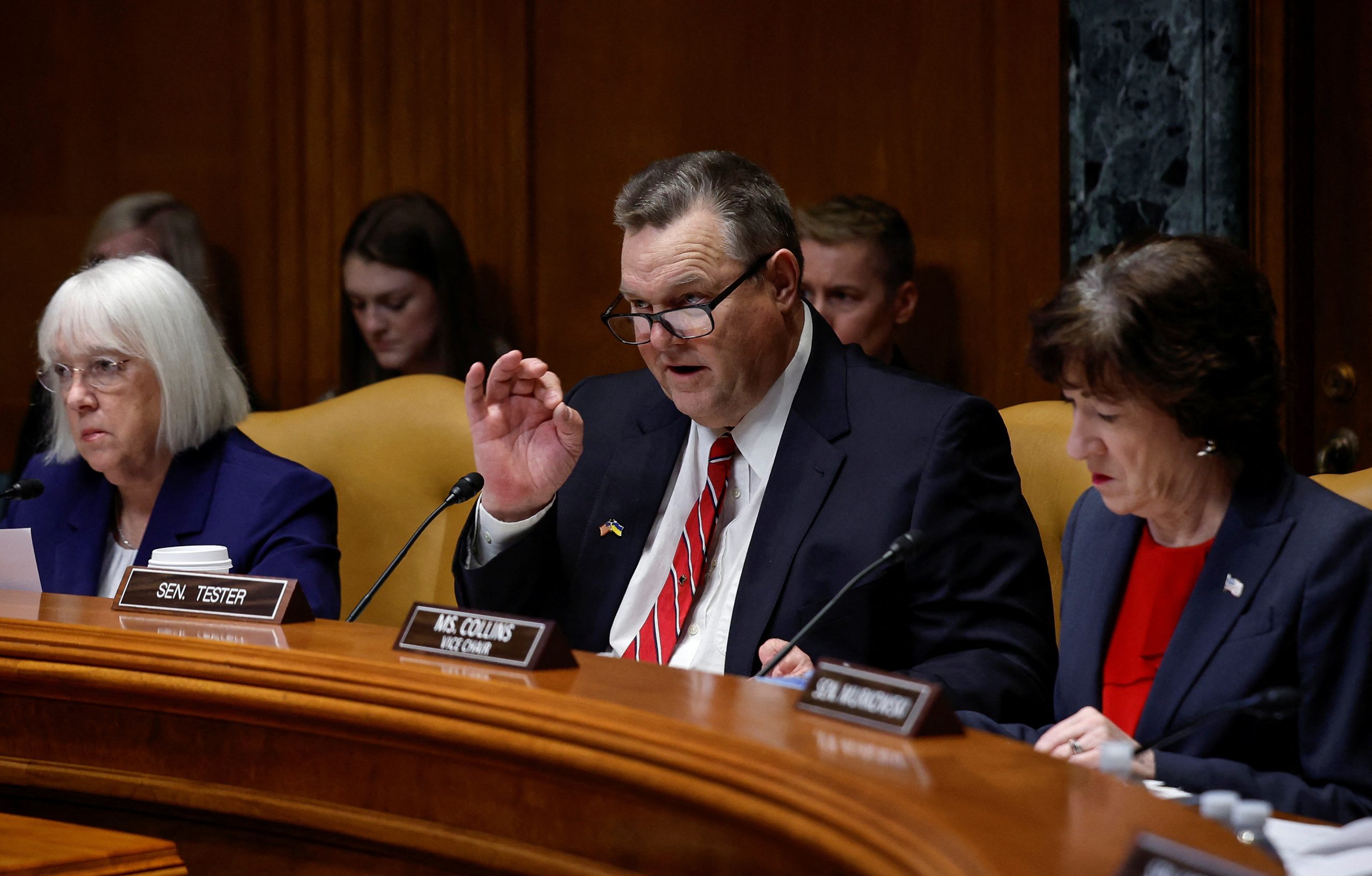
Chris Lange, FISM News
[elfsight_social_share_buttons id=”1″]
Senior Biden administration officials defended their handling of the Chinese spy balloon incursion into U.S. airspace under intense questioning from lawmakers Thursday at a Senate subcommittee briefing.
Tensions flared as lawmakers from both political parties demanded to know why the administration waited a full eight days before President Biden finally issued the order to shoot the balloon down on Saturday. The briefing came hours after a State Department official said that the balloon was fitted with “multiple antennas” capable of collecting highly-sensitive signals intelligence.
‘WE THINK BEFORE WE SHOOT’
Subcommittee chair Sen. Jon Tester (D-Mont.) appeared visibly angry as he questioned senior defense officials about the delayed reaction to the Chinese incursion.
“Do we have a plan for the next time that happens and how we’re going to deal with it? Because quite frankly I’ll just tell you, I don’t want a damn balloon going across the United States,” he said.
Montana, home to Malmstrom Air Force Base, was identified as one of the states over which the balloon hovered. Malmstrom houses one of the nation’s three nuclear missile silos.
Tester also demanded to know why the military did not shoot down at least four other Chinese balloons that flew into U.S. airspace during both the Trump and Biden administrations, a fact that was revealed by Pentagon officials earlier this week who said the incursions were discovered after the fact.
“So, the real question here is, if we had an incursion before and we shot this one down when it hits water, why didn’t we shoot the previous ones down and gather intelligence from those?” Tester asked.
Army Lt. Gen. Douglas Sims, director of operations for the Joint Staff, defended the military’s decision-making process, telling the senators: “We think before we shoot and, in this case, we thought before we shot.”
Sen. Lisa Murkowski (R-Alaska) also expressed frustration with the administration’s slow response, particularly with regard to the fact that the Defense Department chose to allow the balloon to hover unfettered over her state and only raised the alarm when it flew over Montana.
“As an Alaskan, I am so angry. I want to use other words, but I’m not going to,” she said. “The fact of the matter is, Alaska is the first line of defense for America, right? If you’re going to have Russia coming at you, if you’re going to have China coming at you, we know exactly how they come.”
Sims asserted that officials determined at the time that the balloon did not pose any “threat to U.S. citizens or aviation traffic,” and that it did not have the ability to “conduct significant intelligence collection.” He said that after the balloon was detected over Alaska, it flew briefly over Canada before reentering U.S. airspace heading toward Montana. It was then, he said, that the threat level increased.
“The assessment for potential intel risks to sensitive, critical U.S. sites in the Upper Midwest increased and the president asked for kinetic courses of action,” Sims said.
OFFICIALS PRESSED ON US-MADE COMPONENTS FOUND AMONG BALLOON DEBRIS
Sens. Josh Hawley (R-Mo.) and Dan Sullivan (R-Alaska) told reporters that they were not provided with a definitive answer during the briefing as to whether U.S. manufacturing aided in the construction of the Chinese balloon.
Reports surfaced this week that among the debris recovered from the downed balloon in the waters off the coast of South Carolina were western-made parts stamped with English-language markings.
“American companies shouldn’t be helping build spy satellites that are used against their own citizens,” Sullivan told reporters at the Capitol after the briefing. “Maybe there’s nothing to be said about that, but somebody asked about it, and nobody, nobody in that briefing said, ‘oh, it’s not a problem.”
The State Department said earlier Thursday that it was “confident that the balloon manufacturer has a direct relationship with China’s military and is an approved vendor of the [People’s Liberation Army].”
PRESIDENT BIDEN: CHINESE INCURSION ‘NOT A MAJOR BREACH’
In the face of mounting bipartisan criticism over his handling of the Chinese incursion, President Biden said on Thursday that he did not consider it to be a major security breach and that he had no regrets over the decision not to shoot the balloon down sooner.
“It’s not a major breach,” Biden said. “I mean, look, it’s totally … it’s a violation of international law. It’s our airspace. And once it comes into our space, we can do what we want with it.”
CHINA ACCUSES US OF ‘INFORMATION WARFARE,’ MAINTAINS SPYCRAFT WAS WEATHER BALLOON
Beijing, meanwhile, continued to insist Thursday that the balloon was a civilian weather vessel that had merely blown off course. Chinese Foreign Ministry spokesperson Mao Ning said that the U.S. “overreacted” in shooting the balloon down and acted irresponsibly,” according to a CBS News report.
She also suggested that the entire incident “may be part of the U.S. side’s information warfare against China.”
China has so far given no indication concerning how it planned to follow up on a pledge to take further action over the matter.
HOUSE VOTES TO CONDEMN CHINESE INCURSIONS
Meanwhile, the U.S. House of Representatives overwhelmingly passed a resolution Thursday condemning China’s incursions into U.S. airspace as a “brazen violation of United States sovereignty.”
The resolution also calls for transparency from the Biden administration on the Chinese threat through continued briefings that include information about what surveillance data China may have collected as well as how the administration plans to prevent future surveillance operations by foreign adversaries.
Fifteen members abstained from voting, including Rep. Eric Swalwell (D-Calif.), who was recently ousted from the House Intelligence Committee over his alleged romantic relationship with a known Chinese spy.
